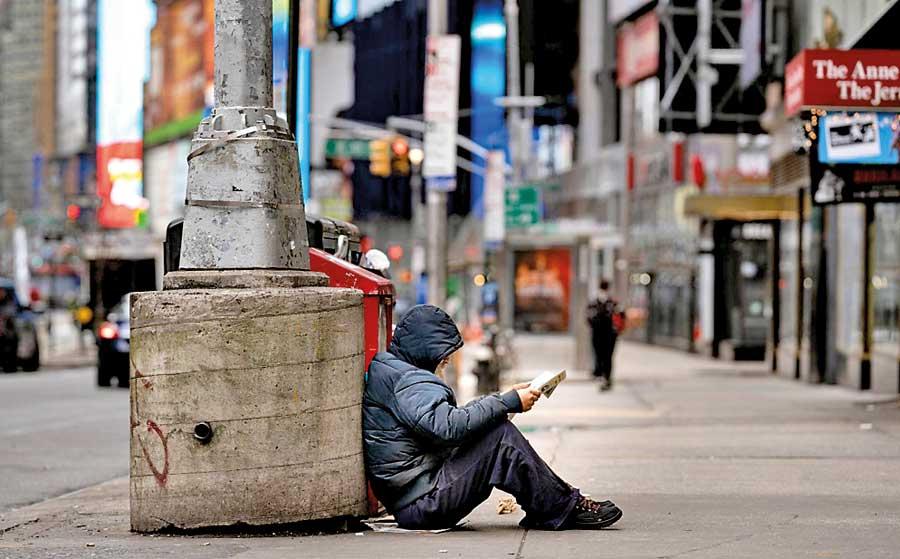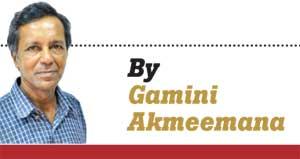Reply To:
Name - Reply Comment

The Official Poverty Measure, according to which the official US poverty rate in 2022 was 11.5 percent, with 37.9 million people in poverty
It’s hard to believe, but McDonald’s is losing customers in the US because they can no longer afford McDonald’s prices.
prices.
Americans spend eleven per cent of their earnings on food. Eating out is a major pastime. But, those in the median income groups (including sections of the middle class) are feeling squeezed as they need to spend more on almost everything, including rents, mortgages, cars and transport. Unemployment is on the rise, with Silicon Valley and Amazon among the earliest to begin layoffs.
Those earning $45,000 or less are less and less able to eat out, and McDonald’s outlets are favourite havens for that.
Business has gone down by thirteen per cent in one year. But McDonald’s is thriving – its shares are doing better than ever. How is that possible? Now here comes the surprise – McDonald’s is actually a real estate company. It has franchised its business in a way that it takes a disproportionate share of the profits at the cost of franchise owners who run these outlets all over the world.
McDonald’s runs a forty billion dollar business empire which is built on real estate. This is how it works – McDonald’s owns the land where the outlets are based. It gives the land to franchise owners on a twenty- year lease basis. Rent is based on sales. The company has franchised ninety-three per cent of its outlets all over the world. Out of forty- three thousand outlets worldwide, McDonald’s has franchised thirty- eight thousand, and it’s charging crazy fees as rents.
Those earning $45,000 or less are less and less able to eat out, and McDonald’s outlets are favorite havens for that
Franchise owners
A typical McDonald’s outlet earns 3.2 million dollars per year. Out of that, 20 per cent goes to McDonald’s – four per cent as royalty, four per cent for marketing, and twelve per cent as rent. The company earns on sales, not on income. If cost of labour goes up, its franchise owners who foot the bill. Typically, the cost of labour for an outlet is thirty-eight per cent, and the cost of food and paper thirty per cent. Out of that 3.2 million dollars annual income, as much as 1.2 million can go as labour costs (the minimum wage for McDonald’s employees in California has been raised to twenty dollars per hour. The cost is of course footed by the outlet owner, not the company). The franchise owner only earns about $298,000 in profits.
It’s the customers and outlet owners who are in trouble, not the company. As they get fewer and less customers, their already narrow profits naturally decrease, but they still need to maintain outlets and pay rent. It’s crazy capitalism at its best.
Even more than a beef burger, a car is an American staple. America has had more car owners than any other country in the world since the 1920s when Henry Ford introduced mass production methods for his famous Model T. Car owners recovered from the 1973 Arab oil embargo and sharp hikes in fuel prices by going for smaller Japanese cars. Toyota makes more cars in the US than in Japan. A Sri Lankan who migrated to the US in the 80s told me: “A car is nothing in the US. Everyone has a car.”
Not anymore. A compact car which cost thirty-eight thousand dollars a few years ago now costs forty five thousand, which is what millions of Americans are earning per annum. A Greyhound bus driver earns forty thousand dollars per annum. People have other priorities – rents and mortgages, medical bills, college education for their children etc.
McDonald’s runs a forty billion dollar business empire which is built on real estate. This is how it works – McDonald’s owns the land where the outlets are based. It gives the land to franchise owners on a twenty- year lease basis. Rent is based on sales
Public transport
They are turning increasingly to buses. But the bus system in the US is really intercity and long distance, not like here where you have bus halts everywhere and small routes plied by buses. Some of the Greyhound bus stations have been sold off, so that passengers have to stand in the open and wait for buses. While cities like San Francisco which have tram cars are better off, many American cities are now struggling with the demand for more public transport.
American automakers are not doing well in China, either. Plunging sales in the home market may lead them into a crisis. Right now, many Americans have bigger worries than buying a car. In 2023, 7.9 per cent of Americans didn’t have health insurance. The way things are now, even those in the higher income brackets may not have enough money to do everything as they are using their credit cards too much.
Poverty levels
But many Americans are poor. As for US poverty levels, there are conflicting reports. Two measures are used to measure poverty in the US: the Official Poverty Measure, according to which the official US poverty rate in 2022 was 11.5 percent, with 37.9 million people in poverty. Neither the rate nor the number in poverty was significantly different from 2021.
The official poverty rate for Black individuals decreased between 2021 and 2022. The 2022 rate was the lowest on record.
The other is the Supplemental Poverty Measure. The SPM rate in 2022 was 12.4 percent, an increase of 4.6 percentage points from 2021. The SPM child poverty rate more than doubled, from 5.2 percent in 2021 to 12.4 percent in 2022, while Social Security continued to be the most important US antipoverty program in 2022, moving 28.9 million people out of SPM poverty.
But what do these conflicting reports tell us? That there are a lot of poor people in the US. Eleven or 12 per cent poor out of a total population of 334.2 million is still a lot of poverty.
Statistically, around 10% of American retirees have $1 million or more in savings as of Jan, 2024. But a new GOBankingRates survey found that most Americans had $1,000 or less in personal savings in 2023; a third have $500 or less saved, while 8.5% have between $501 and $1,000. This hardly amounts to anything now even in Sri Lanka. In September 2023, the survey found that 11.4% of Americans have no savings at all.
They are not going to buy cars, or eat at McDonalds.